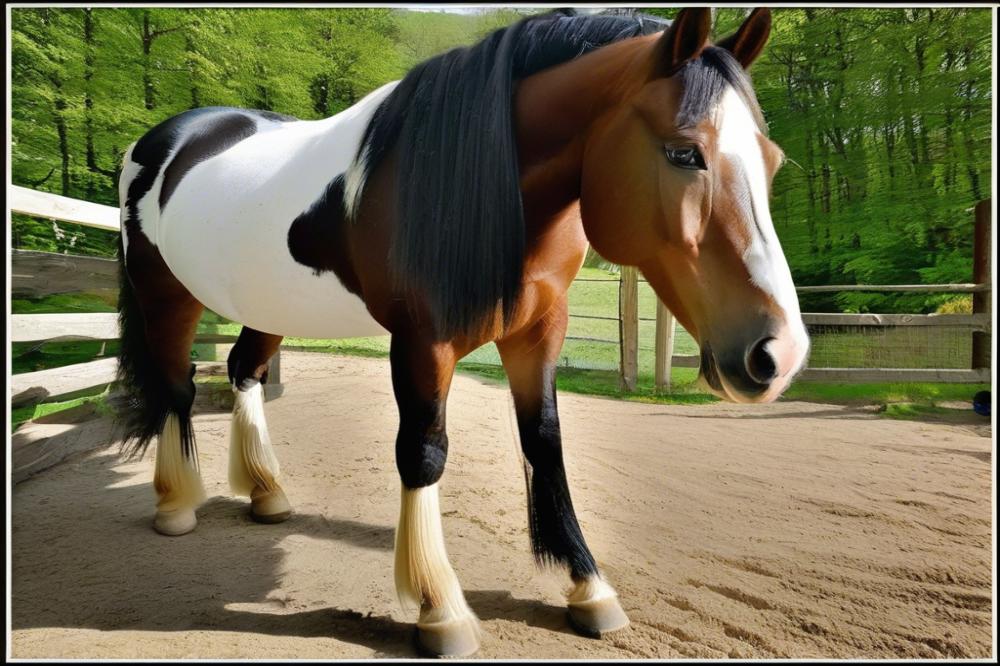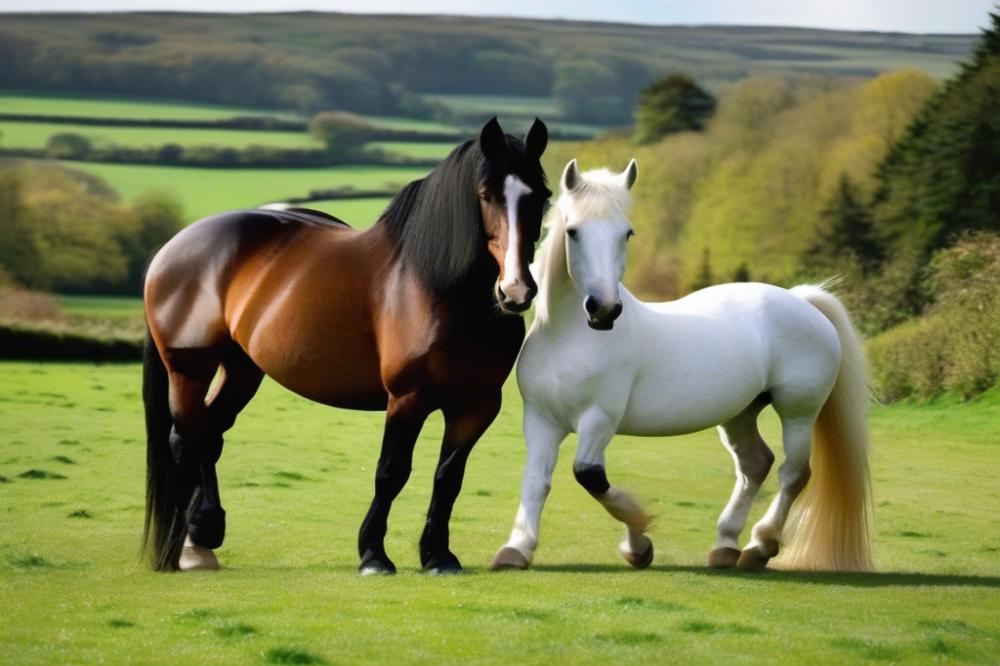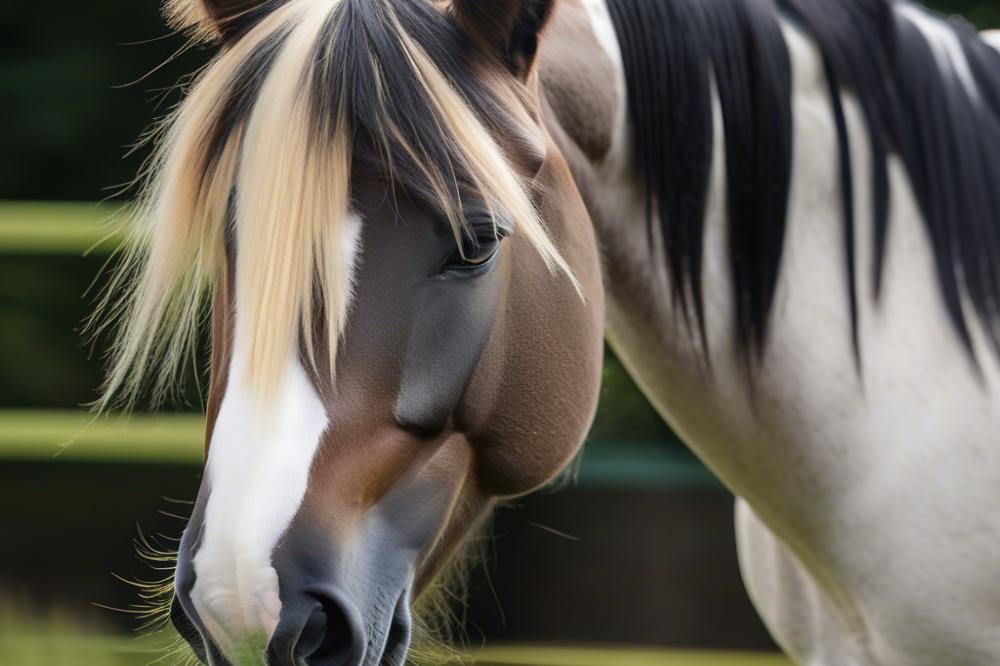Overview of the Irish Cob Horse
The Irish Cob horse, often known for its striking appearance and gentle demeanor, is a beloved breed among many equestrian enthusiasts. With its sturdy build, flowing mane, and feathered legs, this breed isn’t just a pretty face. Often used as a family horse, the Irish Cob is equally comfortable working on farms and strutting around in the show ring. Many people are drawn to these horses for their friendly nature and versatility. Did you know that horses from this breed can excel in various disciplines, from dressage to driving? Their charm is undeniable, making them a popular choice for riders of all skill levels.
The Importance of Hoof Care
Now, let’s talk about hoof care, because that’s the unsung hero of horse health. Just like we need good shoes to keep our feet in tip-top shape, so do our equine pals! The hooves of the Irish Cob play a crucial role in their overall well-being. Without proper attention, these hardworking feet can face a variety of issues. Think of hoof care as the foundation of any good horse care routine. Neglecting it could lead to complications that may impede their performance or, worse, their health. Imagine trying to run a race with a pebble stuck in your shoe; it’s painful and distracting!
Goals of This Article
In this article, we aim to provide clear and practical advice on how to maintain your Irish Cob’s hooves. A well-rounded understanding of hoof protection can make all the difference. Whether you’re a seasoned horse owner or a newcomer to the world of breeds of equine, our goal is to educate and simplify the hoof care process. We’re here to help you keep your horse happy and healthy, while also ensuring they stay ready for whatever adventures lie ahead. From simple routines to the best equestrian products for hoof care, we have you covered. So, saddle up, and let’s explore the wonderful world of hoof maintenance together!
Also, if you’ve ever found yourself wondering how were horses trained for war, remember that hoof care was just as vital then as it is now. After all, a warrior wouldn’t want their trusty steed to be limping into battle, right?
Anatomy of the Hoof
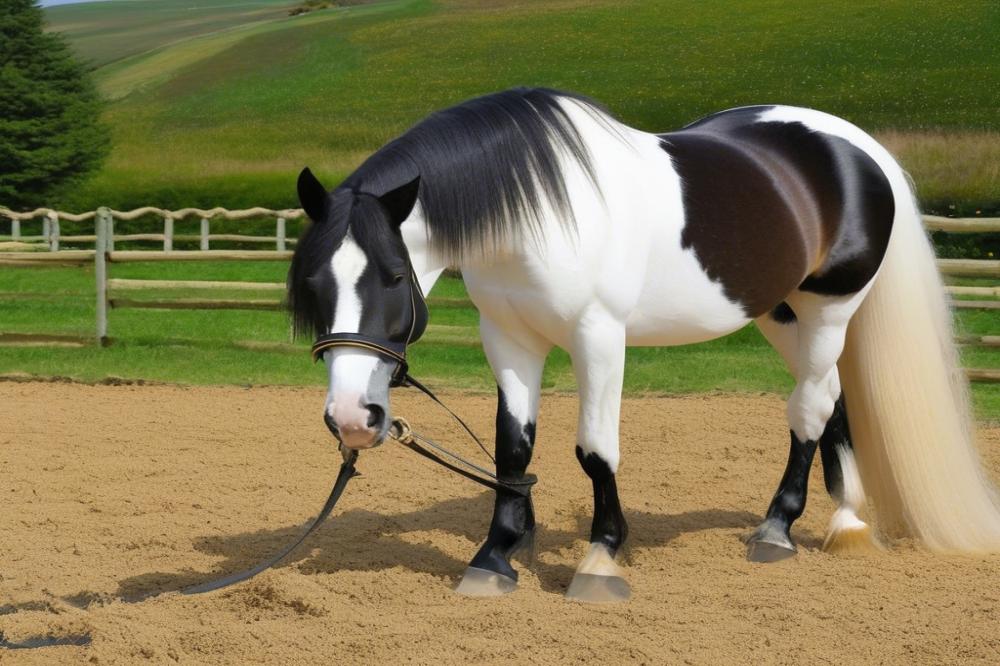
Overview of the hoof structure
The hoof is a fascinating structure. It’s made up of several parts, each playing a part in keeping your Irish Cob healthy and sound. The hoof consists of the outer wall, the sole, the frog, and various internal structures like the laminae and digital cushion. The wall protects the internal parts, while the sole acts as a guard against rough terrain. That frog? Think of it as a shock absorber, providing traction and aiding in circulation. Proper understanding of these components is essential for maintaining equine health.
Differences between Irish Cob hooves and other breeds
Remarkably, Irish Cobs have thicker hooves compared to many other breeds. This characteristic is a nod to their strength and versatility. Their round shape helps them navigate different terrains. While some breeds may have more delicate feet, Cobs stand firm and proud. The unique conformation of their hooves provides added resilience, especially in rugged environments. It’s like comparing a sturdy boot to a dress shoe. Both serve a purpose, but one is undoubtedly built for durability.
Common hoof problems specific to Irish Cobs
Hoof issues can strike any horse, but Irish Cobs face a few common challenges. Thrush is quite prevalent among this breed. It’s a nasty infection that can sneak in, especially if the hoof isn’t kept clean and dry. White line disease is another problem that can occur. This happens when the seal between the hoof wall and the underlying laminae breaks down, leading to separation. Regular hoof trimming helps to avoid these issues.
Being diligent about hoof care is not just a chore; it’s the glue that holds up equine health. You can be proactive rather than reactive. Additionally, always keep an eye out for cracks or chips. If you spot a problem early, you can treat it before it becomes serious. Using proper horse care products, like hoof conditioners, can also make a difference. Good hoof protection goes a long way in maintaining the health of your Irish Cob. So, keep those hooves happy, and they’ll keep you moving!
Regular Hoof Care Routine
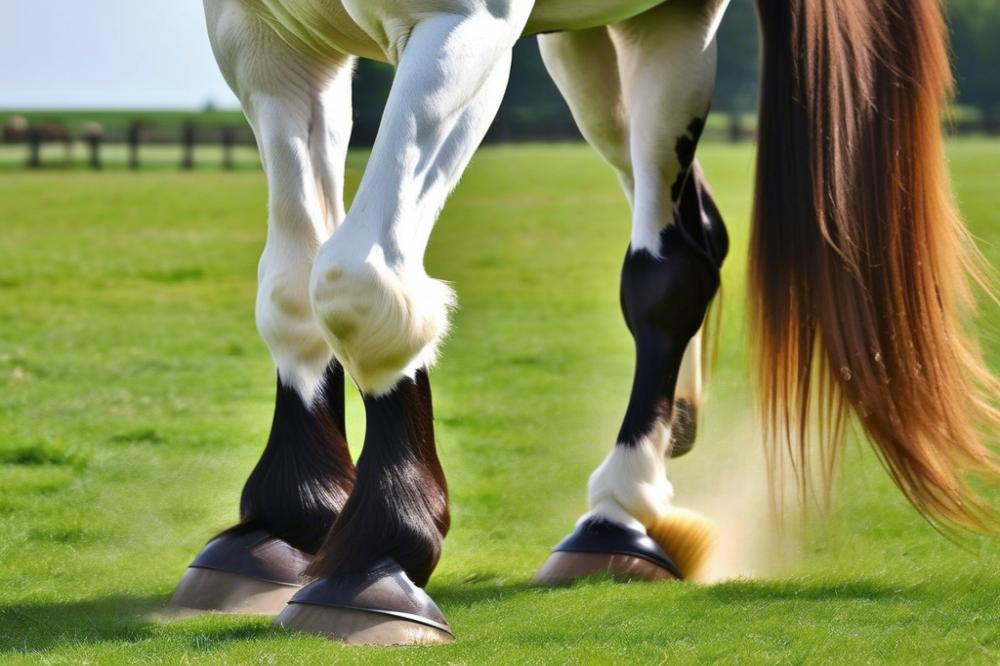
Taking care of a horse’s hooves is like maintaining the foundation of a house. You wouldn’t let a crack go unnoticed, right? Daily inspection and cleaning should be a part of your routine. Check for dirt, stones, or any signs of injury. It’s like a daily health check for your Irish Cob. A clean hoof is a happy hoof!
Trimming and shoeing are critical for equine health. Regular visits from a farrier help keep hooves in good shape. A trim every 6 to 8 weeks can do wonders. When a hoof is neglected, problems can arise swiftly. Horses may face issues like cracks, uneven wear, or thrush. All these are no fun for anyone involved. You can think of trimming like a haircut; it keeps things neat and healthy.
So, what’s the best schedule for hoof care? Create a plan that fits both your life and your horse’s needs. Daily checks, of course, are a must. Set a regular trimming schedule based on your horse’s activity level. If your Irish Cob is busy chomping through rocky trails, frequent trims are in order. On the other hand, if your horse is a pasture potato, you might go a bit longer between trims.
Remember, hoof protection is key. If your equestrian activities involve hard surfaces, shoes can be beneficial. They act as armor for their feet. Your horse relies on you to keep them comfortable and healthy. Caring for hooves isn’t just about appearance. It’s about ensuring your horse stays sound and happy.
Signs of Hoof Problems
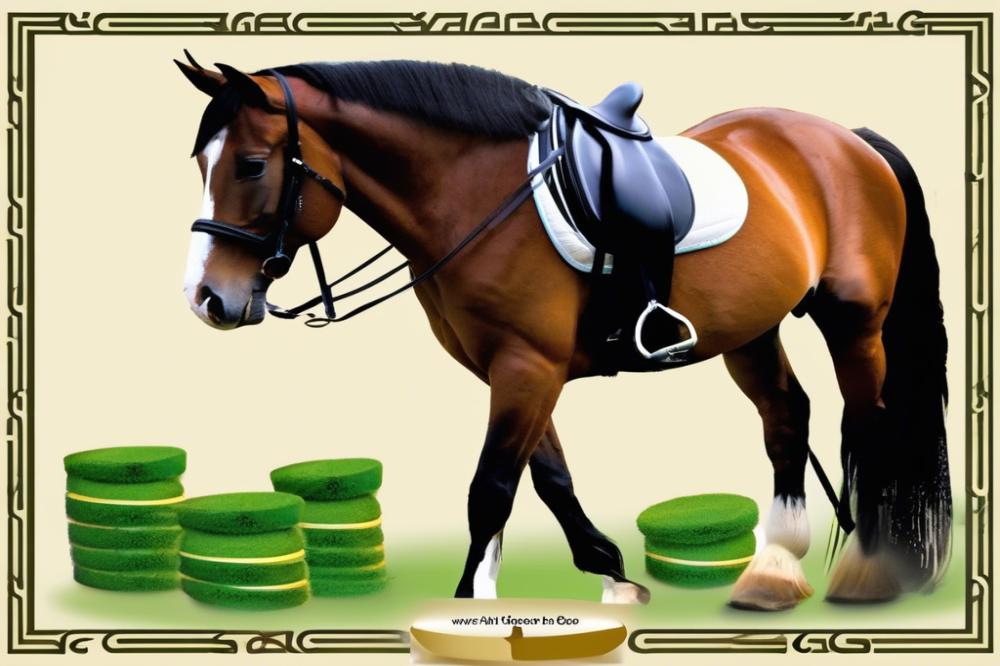
Identifying Lameness and Discomfort
Noticing when your Irish Cob is off can be tricky. Sometimes, they may look fine while clearly feeling discomfort. Watch for signs like limping or not wanting to move. An uneasy horse might hesitate to put weight on a specific hoof. You might hear a strange sound when they walk, like a thud or a clop. Pay attention if your Cob suddenly begins to shuffle around. Horses can be masters of hiding their pain, so a little sleuthing goes a long way.
Common Hoof Conditions
Several hoof problems affect equine health, especially in our sturdy Irish Cobs. One common issue is thrush, a bacterial infection that thrives in moist conditions. The smell can be unpleasant, but catch it early, and you can treat it easily. Laminitis is another serious concern that can cause significant discomfort. Symptoms can include a reluctance to move or unusual posture, where the horse shifts weight onto the hindquarters. Regular hoof checks are essential to spot these conditions before they escalate.
When to Consult a Veterinarian or Farrier
Now, when do you need to call in the experts? If lameness lasts for more than a day or two, that’s a red flag. A farrier can help with trimmed or uneven hooves, but a vet should be your go-to for anything that looks serious. Just remember: don’t wait until the problem worsens. Sometimes, horse health can take a sudden turn. Keeping a regular schedule with your farrier can also help catch issues early. Whether you’re using equestrian products like hoof boots or topical treatments, stay vigilant! You want your Irish Cob moving happily, not limping around like a three-legged dog.
Nutritional Influences on Hoof Health
Importance of Diet for Hoof Development
Diet plays a big role in hoof development. Think of it as the foundation of a house. If it’s weak, everything above can crumple. For the Irish Cob, a balanced diet means strong hooves that can stand up to various terrains. A horse receiving the right nutrition often shows better hoof growth and overall horse health. Wild horses munch on grass, bushes, and other plants. They get plenty of the nutrients they need. Domestic horses, on the other hand, rely on what we provide. Chewy hay, quality grain, and fresh water should be staples in their diets.
Recommended Nutrients and Supplements
Consider vitamins and minerals essential for hoof care. Biotin is a superstar in the hoof health world. It supports hoof growth and strength. Zinc also plays a crucial role. It helps with keratin production in hooves. Other important nutrients include copper and omega fatty acids. These can improve the overall condition of the hooves. Sometimes, a good supplement can make a world of difference. Equestrian products specifically designed for hoof health are worth exploring. Don’t forget to consult your vet before trying new supplements.
Effects of Weight and Body Condition on Hoof Care
Weight can heavily impact hoof health. A horse that is too heavy places extra strain on its hooves. This might lead to problems like laminitis, which is every horse owner’s nightmare. Keeping an eye on their body condition is essential. An Irish Cob that is fit and at a healthy weight will likely have better hoof structure. Proper horse care includes ensuring they get enough exercise. Regular movement helps keep their hooves in great shape. A balanced diet supports not only weight management but also overall equine health, making hoof protection much easier. When hooves are neglected due to weight issues, it can spell trouble for the horse.
Choosing the Right Farrier
Qualities to Look For in a Farrier
Finding the right farrier is like picking the perfect pair of shoes. It’s all about comfort and fit. First and foremost, a great farrier should have solid communication skills. You want someone who listens to your concerns about your horse. They should explain their methods clearly, so you understand every snip and trim. Proficiency is another critical quality. Look for someone with a level of skill that inspires trust. An educated farrier will know the ins and outs of hoof care, especially when it comes to hoof protection.
Importance of Experience with Irish Cob Horses
Experience truly matters. Not all horses are created equal, and Irish Cobs have their own needs. A farrier who specializes in this breed will know the best techniques to address their unique qualities. For instance, these sturdy horses often have thick hooves that need careful attention. An experienced farrier will recognize specific traits and can spot potential problems before they start. Never hesitate to ask about past work with Irish Cobs. Their answers can help you gauge if they’re the right match for your horse.
How to Establish a Good Relationship with a Farrier
Building a rapport with your farrier can make horse care much smoother. Trust goes a long way in this profession. Schedule your appointments consistently, so your equine health remains a priority. Showing respect for their time and expertise goes a long way as well. Ask questions during appointments; it shows you care and are involved. You might even share anecdotes about your horse’s personality. A little laughter can break the ice. When they know your horse well, it leads to better care.
Remember that the relationship is a two-way street. Just as you want quality care, your farrier appreciates a client that values their work. Mutual respect fosters a partnership that benefits both horse health and hoof care. Let them know how their care impacts your Irish Cob, and watch the bond grow!
Seasonal Considerations in Hoof Care
When it comes to hoof care, the weather can be a big player. Different temperatures and moisture levels impact equine health in various ways. For instance, during the wet months, the soft ground can lead to a host of issues. Excess moisture often causes hooves to soften too much, leading to problems such as thrush. On the flip side, winter brings rock-hard ground and cold temperatures. It’s important to adapt our horse care methods based on these seasonal changes.
Terrain and environment also play a significant role. The Irish Cob loves to roam, but riding on rocky or uneven ground can take a toll on the hooves. Regularly check for cracks or chips. If your horse tends to slip, hoof protection comes in handy. There’s nothing worse than seeing your beloved equine friend struggle to find solid footing. This can be tough on their hooves, especially in tough terrain.
During the summer months, the heat can dry out hooves, leading to brittle and cracked edges. Hydration isn’t just for us. Make sure the hooves stay moisturized, particularly in dry spells. A good hoof oil or conditioner can do wonders. It’s one quick and easy way to keep hoof health in check. Oh, and don’t forget to pick those hooves daily! It’s a small task that can ward off big problems.
As leaves start to fall, so do the challenges for hoof care. Autumn can be unpredictable. One day brings sunshine, and the next brings rain. This mixing weather can create muddy patches that harbor bacteria. Keep an eye on those mud pies; they can be dangerous! A mud boot for the horse could serve as an effective barrier, allowing you to enjoy those beautiful fall rides without worry.
Hoof care doesn’t have to be a chore. Think of it as bonding time with your Irish Cob. Whether you’re brushing, cleaning, or applying that special hoof balm, it’s all about caring for your friend. Plus, who doesn’t love spending time in nature? Each season brings its own challenges, but understanding them helps keep your horse happy and healthy.
Alternative Therapies and Treatments
Overview of Alternative Treatments
There’s more to hoof care than just traditional shoeing or trimming. Horse owners often look to alternative therapies to promote equine health. Hoof oils are one popular option. They can help to moisturize and protect the hooves from drying out, especially during harsh weather. Various wraps serve different purposes, too. For example, some wraps support healing for injuries, while others keep hooves warm and encourage blood flow. Don’t overlook the power of natural remedies, like apple cider vinegar or essential oils. These can provide soothing relief when used correctly.
When to Consider Alternative Therapies
Not every hoof problem needs a trip to the vet. Sometimes, alternative treatments can be tried first. They’re particularly useful for minor issues or when dealing with routine horse care. If your Irish Cob shows signs of dryness or cracking, that’s a good time to reach for hoof oil. Waiting too long might lead to more extensive hoof damage. Always consider these therapies as complements, not substitutions, to professional care. However, if a problem seems serious or doesn’t improve, it’s wise to consult a veterinarian.
Evidence and Myths Surrounding Popular Treatments
Many horse owners have come across various options for hoof care, but not all of them have solid evidence behind them. For instance, some swear by certain commercial equestrian products, claiming miraculous results overnight. Keep in mind that while anecdotal evidence can be powerful, it doesn’t replace scientific validation. As for hoof wraps, a lot of people think they can cure anything—this isn’t always the case. They can aid in recovery but won’t magically fix every ailment. Remember the importance of research. Before diving into alternative treatments, dig into reliable sources or consult with a knowledgeable farrier or vet. There are plenty of myths swirling around the horse world, and it’s easy to get caught up in them. Finding what really works takes time, and that’s just a part of being a responsible horse owner.
Final Thoughts on Hoof Care for Your Irish Cob
Taking care of your Irish Cob’s hooves is not just a chore; it’s an essential part of keeping your horse happy and healthy. Consider hoof care as the foundation of your horse’s overall well-being. Just like we trust a sturdy pair of shoes to support our feet, horses rely on their hooves to carry them through every adventure. Neglecting hoof care can lead to problems that may affect their performance and quality of life.
Consistency is key when it comes to hoof maintenance. Think of it like brushing your teeth. Skipping a day might not seem like a big deal, but let it go too long, and you could face some serious consequences. Regular check-ups and routine maintenance will keep those hooves in tip-top shape. Luckily, your Irish Cob is built with strong and resilient feet typical of draft breeds, but even they need a little TLC. Grab your tools, and don’t forget to keep an eye on their hooves, especially after a long day out on the horse ground tie.
Remember, happy hooves lead to a happy horse. Treat those feet like the prized possessions they are; after all, nobody wants to trot around on sore soles! Observing your horse’s behavior can provide valuable clues. Does she seem a bit off when walking? Is he reluctant to trot? Such signs can signal that it might be time for a closer look. You know your cob better than anyone, so trust your instincts if something seems off.
In summary, maintaining healthy hooves is crucial for ensuring your Irish Cob’s performance and well-being. So, wear your farrier hat proudly and make hoof care a priority. By giving your horse the attention he deserves, you pave the way for countless adventures together. Here’s to many happy trails ahead!

